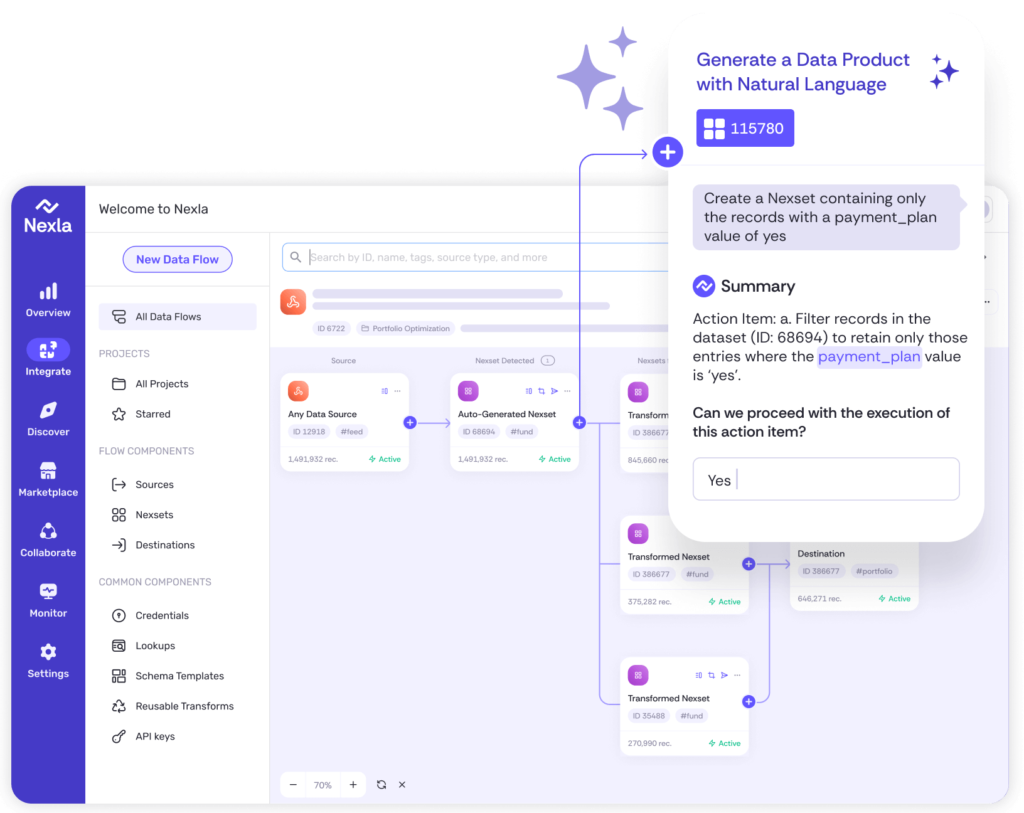
Success now hinges on how well businesses share data beyond their walls. Seamless intercompany data flow fuels smarter decisions, faster collaboration, and real growth. In this new era, connection is the key to competitiveness.

Today, data is a vital asset for organizations across industries. The ability to effectively share data across platforms and systems is crucial for fostering collaboration, driving innovation, and enabling data-driven decision-making.
However, the path to seamless data integration has several challenges and obstacles that can hinder the smooth exchange of information. From data security and privacy concerns to interoperability issues and compliance requirements, organizations must navigate a complex web of technical and regulatory hurdles.
This article delves into the top challenges associated with data integration across platforms, exploring the underlying causes and potential solutions. By understanding these challenges and implementing best practices, organizations can unlock the full potential of their data assets and reap the benefits of effective data integration.
Data integration involves making data accessible to multiple parties, systems, or organizations. It enables different teams to access, utilize, and derive insights from a central source of information, fostering collaboration and knowledge exchange. By breaking down data silos and promoting data accessibility, organizations can harness the collective intelligence and empower their teams, customers and partners.
Effective data integration is crucial for several reasons:
Despite the numerous benefits, data integration across platforms comes with its own set of challenges. These challenges span technical, organizational, and regulatory domains, requiring a multifaceted approach to overcome them. In the following sections, we will explore these challenges in detail and discuss strategies to mitigate them, empowering organizations to unlock the full potential of their data through effective integration practices.
Integrating data across diverse platforms introduces vulnerabilities that can compromise information. Organizations face significant challenges in preventing data breaches and unauthorized access, which underscores the need for stringent data protection measures. Implementing advanced security techniques such as governance, access controls, and data anonymization is essential to safeguard confidential data.
Access controls are vital in managing permissions, ensuring that only those with explicit clearance can interact with sensitive datasets. Data products that only contain reference to the data sets further helps maintain privacy by stripping identifiable details, reducing the risk of personal data exposure.
To address security and privacy concerns effectively, organizations should adopt a holistic strategy:
Navigating the complexities of data integration often involves addressing interoperability challenges. The variety of data formats, structures, and standards across platforms can make data integration complex, inaccurate and inefficient, impacting the end use cases. Systems that do not align in terms of data protocols require manual intervention to transform and map data, which is both labor-intensive and susceptible to mistakes.
Each software or technology deploys unique data formats or proprietary standards, complicating integrations. This absence of uniformity amplifies the difficulty of merging disparate data sources, often resulting in isolated data pockets. As organizations aim to integrate these diverse sources, they encounter delays in data-driven projects and diminished operational capabilities.
To alleviate these challenges, consider the following strategies:
Ensuring that data remains accurate and consistent across multiple sources is a key obstacle in effective data integration. Organizations often face hurdles in aligning data integrity when different systems generate and store information in varied formats. These discrepancies can lead to errors that compromise analytical outcomes and strategic decisions, making it imperative to address these quality issues proactively.
Inadequate data validation and cleansing processes can amplify these challenges, allowing inaccuracies to persist and propagate. Without a robust mechanism for identifying and rectifying errors, organizations risk making decisions based on flawed insights. As data environments become increasingly complex, the task of maintaining high data quality requires meticulous attention and advanced methodologies.
To effectively manage these challenges, organizations should adopt comprehensive strategies:
Organizations face increased pressure on their data infrastructure as they scale operations to handle a wider array of data sources and formats. The need for real time data processing across multiple channels eading to performance degradation. Such demands necessitate a robust infrastructure capable of adapting to the dynamic nature of data workloads and maintaining responsiveness under varying conditions.
Traditional data architectures often struggle with the complexity and magnitude of modern data demands, leading to inefficiencies. These inefficiencies can result in prolonged processing times and reduced data throughput, hampering the timely extraction of insights. Addressing these challenges requires a strategic overhaul of data handling processes to enhance system capabilities.
To effectively manage scalability and performance issues, organizations can implement several key strategies:
These enable organizations to build a scalable data infrastructure that meets the demands of modern data environments, ensuring robust performance and efficient data handling.
Organizations often struggle with siloed departments that impede the seamless flow of information and collaboration. These silos are exacerbated by outdated processes and legacy systems, creating barriers to efficient data integration. To address these challenges, organizations must cultivate a culture that prioritizes openness and integration, vs silos..
Outdated systems further entrench these silos by anchoring organizations to inflexible technologies. The rigidity of such systems poses significant obstacles to adopting innovative data-integration practices, necessitating a strategic shift toward more adaptable solutions. This shift requires deliberate action to modernize infrastructure and embrace technologies that support unified data ecosystems.
To effectively break down silos and reduce resistance, organizations can implement the following strategies:
While the challenges of data integration across platforms can seem daunting, they are not insurmountable. With the right technology partner and adopting a strategic approach that addresses security, interoperability, data quality, scalability, and organizational silos, you can unlock the full potential of your data assets.
If you’re ready to simplify your data integration journey and harness the power of seamless data integration, schedule a demo with us today and let us help you navigate the complexities of the data landscape.
Check out our inter company data integration page for more resources.

Instantly turn any data into ready-to-use products, integrate for AI and analytics, and do it all 10x faster—no coding needed.